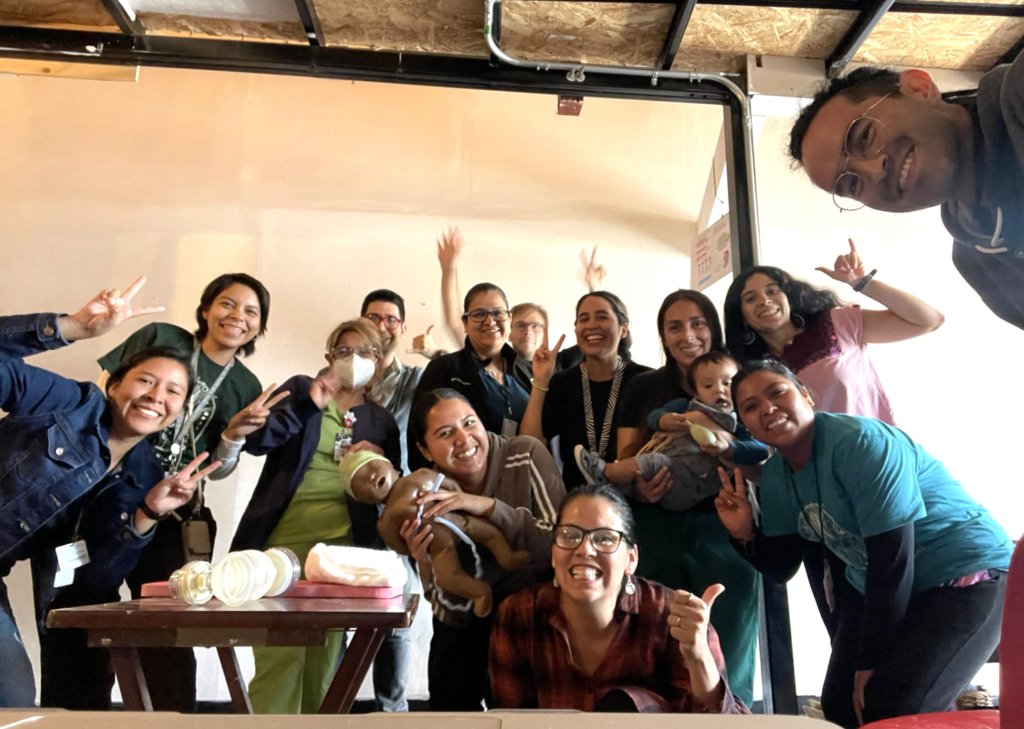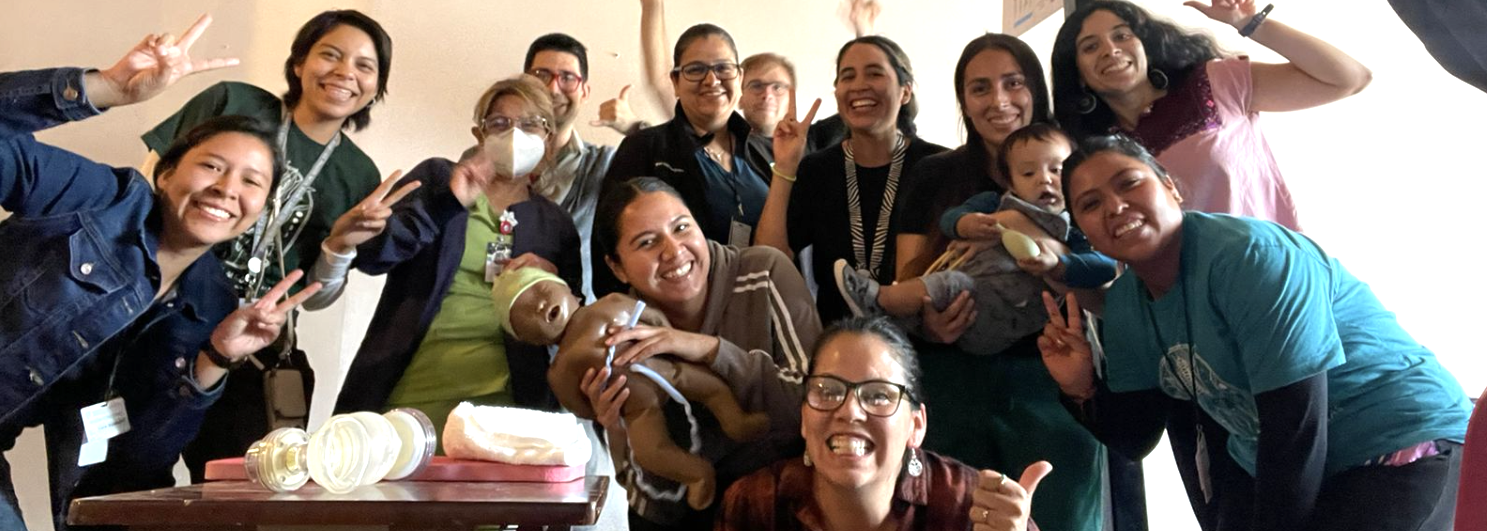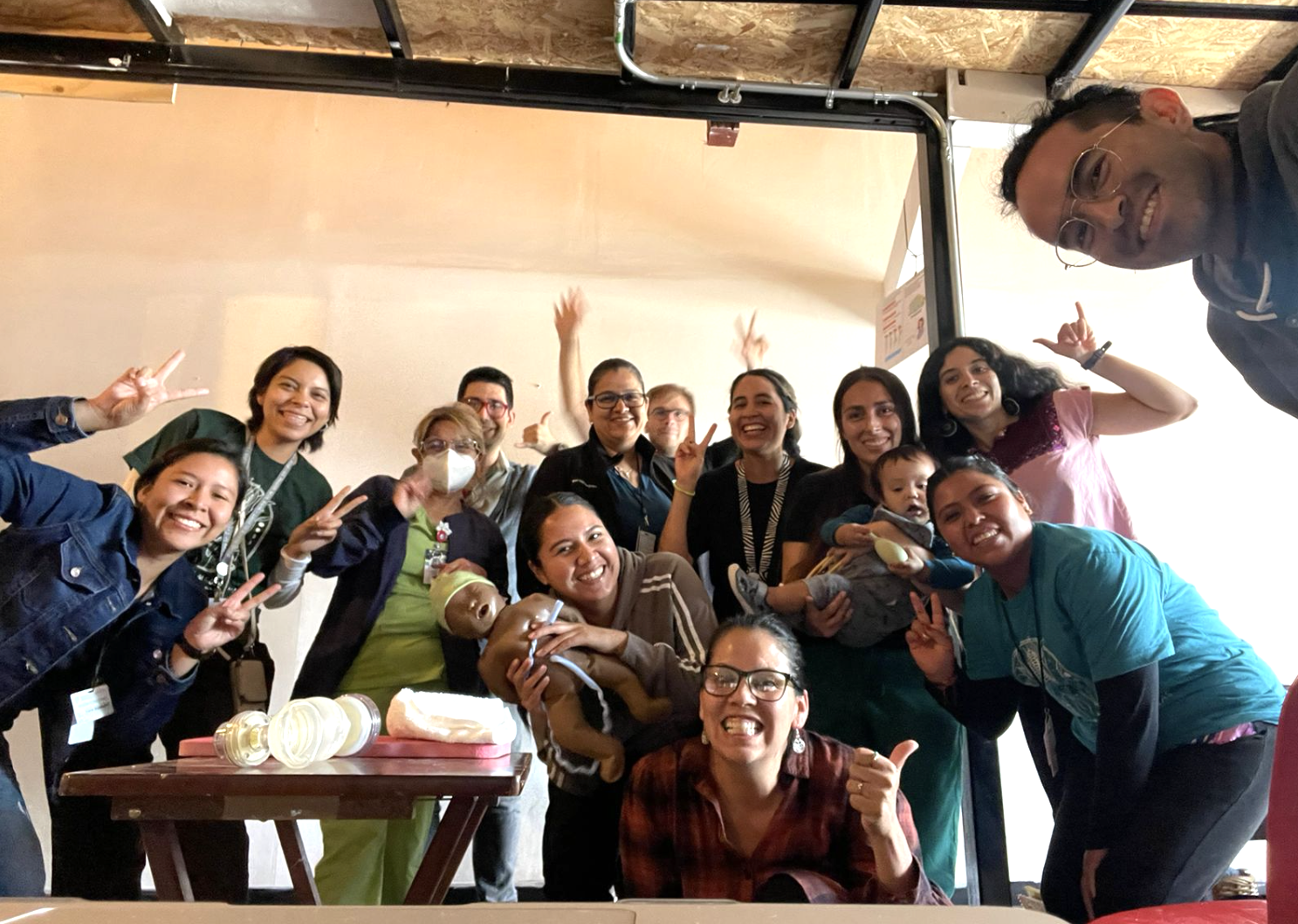Published: 12/01/2023
By Madhuvanti Gia Mukherjee, Stanford student and Families at the Border volunteer
To address the growing need for pediatric emergency readiness at the U.S.-Mexico border, Stanford pediatricians recently collaborated with healthcare providers at the Refugee Health Alliance (RHA) in Tijuana to provide a half day virtual course on CPR and other lifesaving skills.
RHA cares for about 1,000 patients each month, more than half of them children. The clinic is predominantly staffed by general practitioners, midwives, and nurses, with the valuable assistance of local pediatric specialists on the weekends. Such an arrangement is common in low-resource healthcare settings around the world, where most physicians act as generalists to cover the broad range of needs they see. The goal of the course was to augment these doctors’ training in pediatrics, particularly as they find themselves tending to a large volume of young patients, said Maggi Smeal, MD. Smeal is a Stanford pediatrician and co-leads the Stanford’s Families at the Border initiative.
Twelve dedicated family doctors, nurses, midwives, and administrative staff from RHA attended the session. Pausing their work for the day, they projected the Zoom in a shared clinic space so everyone could participate. Through live simulations, case studies, and video demonstrations of treatment specific to young patients, participants enhanced their knowledge of how to treat seizures, anaphylaxis, and respiratory distress and arrest.
“The pediatric emergencies workshop was incredibly useful, as on multiple occasions, we have dealt with similar issues in shelters and in locations where ambulances do not arrive. In these situations, we have had to treat patients by ourselves with limited tools and medications,” says Psyche Calderon, MD, the co-founder of RHA. “Using neonatal models to practice CPR served as a good reminder of emergencies that we hope will never happen to us in the clinic.”
“The pediatric emergencies workshop was incredibly useful, as on multiple occasions, we have dealt with similar issues in shelters and in locations where ambulances do not arrive. In these situations, we have had to treat patients by ourselves with limited tools and medications. Using neonatal models to practice CPR served as a good reminder of emergencies that we hope will never happen to us in the clinic.”
Psyche Calderon, MD, co-founder, RHA
The timing of this work is significant, as immigrants fleeing conflict, food insecurity, and other dangerous conditions in their home countries arrive at the US-Mexico border in record numbers. Both indigenous citizens and individuals in refugee camps on the border, particularly in densely populated cities such as Tijuana, face resource-poor health care systems, poor medical infrastructure, and a lack of transportation. Pediatric emergencies can be difficult to manage in these kinds of outpatient clinical contexts, which operate under high patient volumes and heavy resource constraints. Smeal describes the current situation as placing great strain on medical providers striving to treat asylum seekers and their children on the ground.
“The physicians at RHA are doing an outstanding job with these pediatric emergencies, but they have huge challenges in getting these children to higher levels of care due to, for example, limitations in getting ambulances. They sometimes have to transport sick children in private vehicles themselves, taking on a much greater amount of responsibility than is expected,” said Smeal. “These are real-life stories that have directly been recounted to us. They are very real, so this is the area in which we are trying to make a difference for patients.”

To address these challenges, Smeal, along with her colleagues at Stanford Revive, Marc Berg, MD and Lynda Knight, RN, delved into the minute details of pediatric emergency response at RHA’s main clinic in Tijuana. Planning the event, they worked with partners at RHA to evaluate the clinic’s medication and equipment inventory, discuss related cases they had previously treated, and consider specific medical conditions that patients could exhibit. Reflecting on this process, Smeal says, “when there is a pediatric emergency, you first need to recognize that need. Then, what is going to be the protocol for bringing that child into a room, calling for help, having someone be a ‘leader’ as you go through the assessment? We covered, in a very practical way, how they are going to respond to these emergencies.”
When there is a pediatric emergency, you first need to recognize that need. Then, what is going to be the protocol for bringing that child into a room, calling for help, having someone be a ‘leader’ as you go through the assessment? We covered, in a very practical way, how they are going to respond to these emergencies..”
Maggi Smeal, MD, Stanford Pediatrician
FATB’s partnership with RHA is underpinned by a spirit of bidirectional knowledge exchange, friendship, and mutual respect. Dr. Smeal emphasizes the value of learning from the indigenous practices and expertise of the midwives to create a shared culture of trust and humility. Smeal reflects on the training, “we felt inspired, energized, and enlivened by our RHA colleagues — in this partnership, we have a shared goal of wanting every child to have the best possible medical care.”
The training is also part of a larger effort to meet the increasing demand for pediatric healthcare at the border through telehealth approaches. Current initiatives involve text-based, physician-to-physician consultations through a WhatsApp group managed and operated by RHA doctors. Going forward, Smeal notes there is a need “to develop a comprehensive and rigorous telehealth platform” in partnership with the clinic, so providers on the ground can continue to administer high-quality care to patients with more pressing needs.
To learn more about Stanford’s Families at the Border initiative and its partnerships with RHA, click here.

